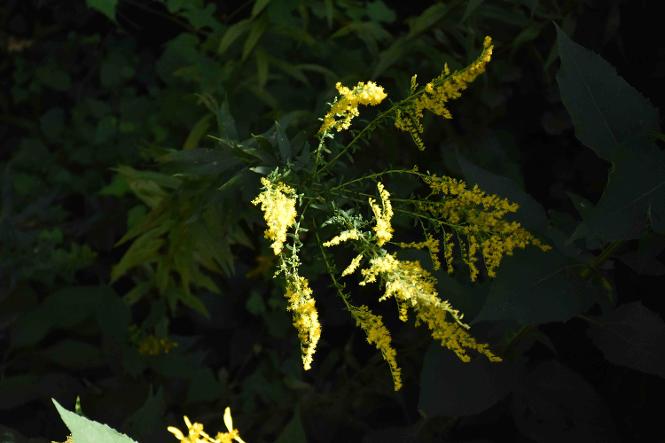
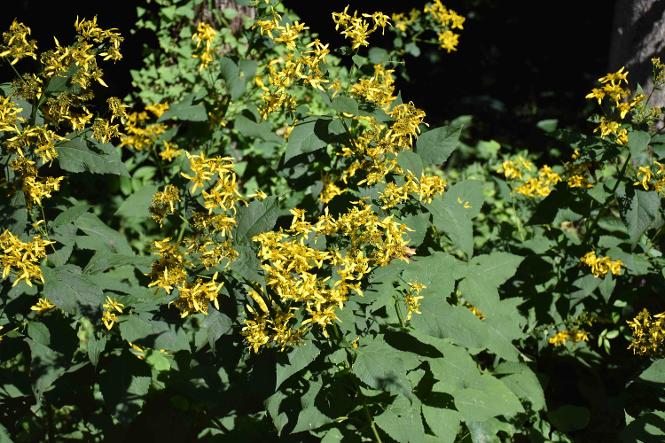
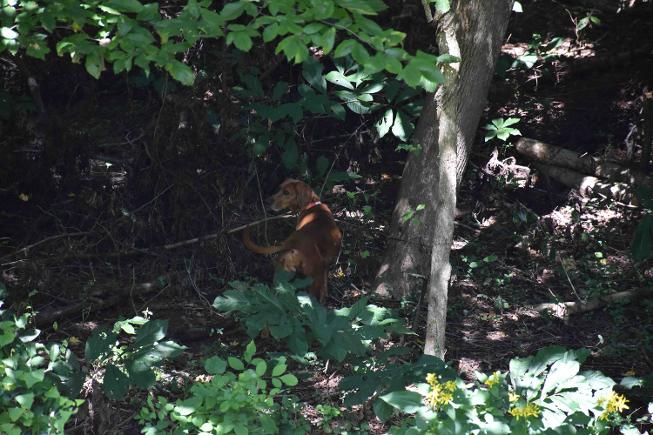
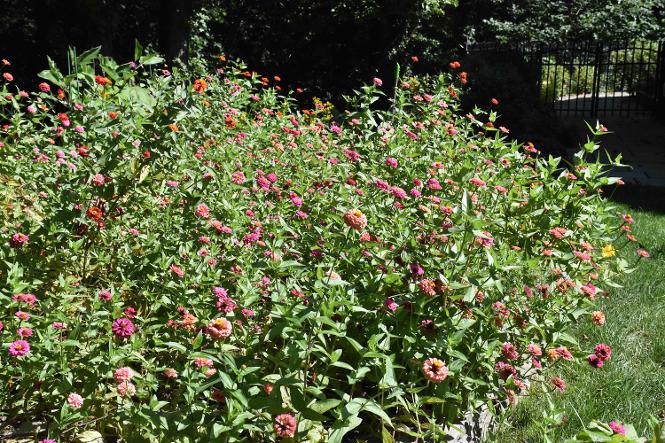
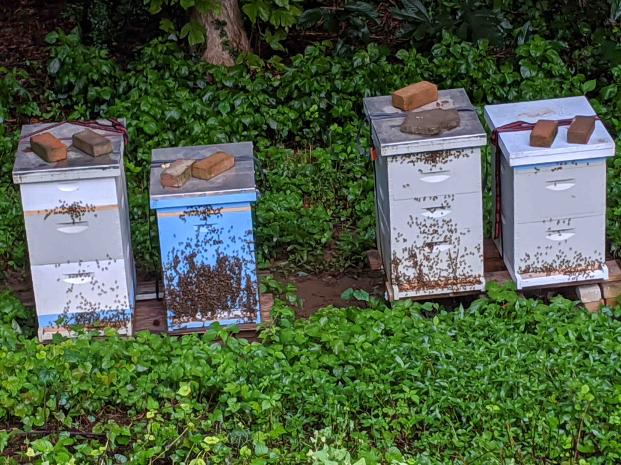
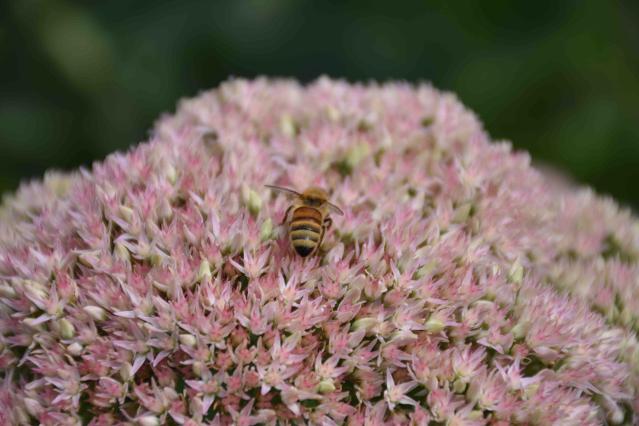
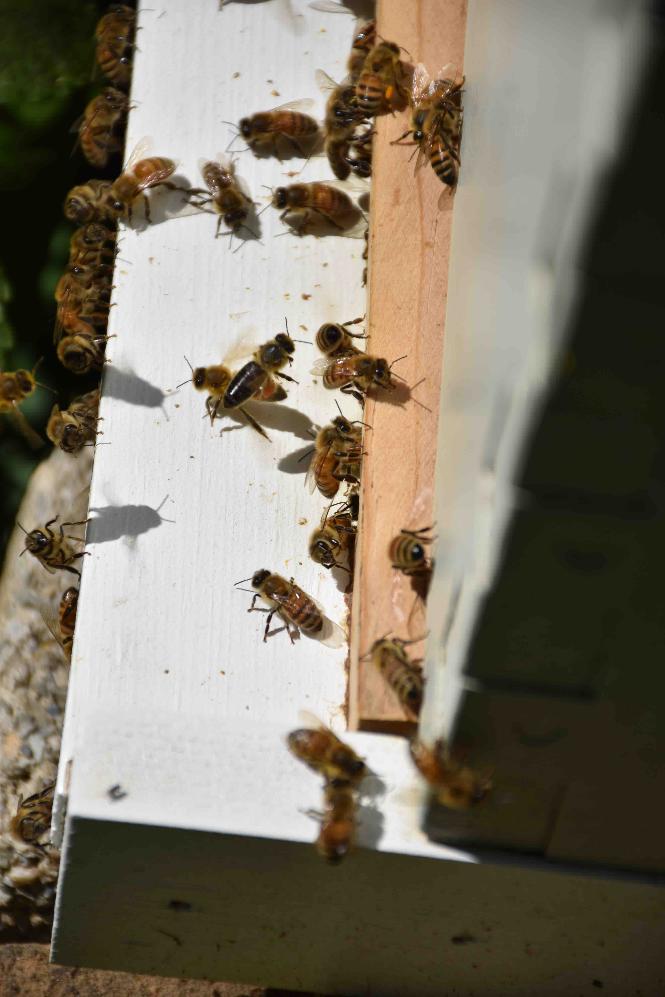
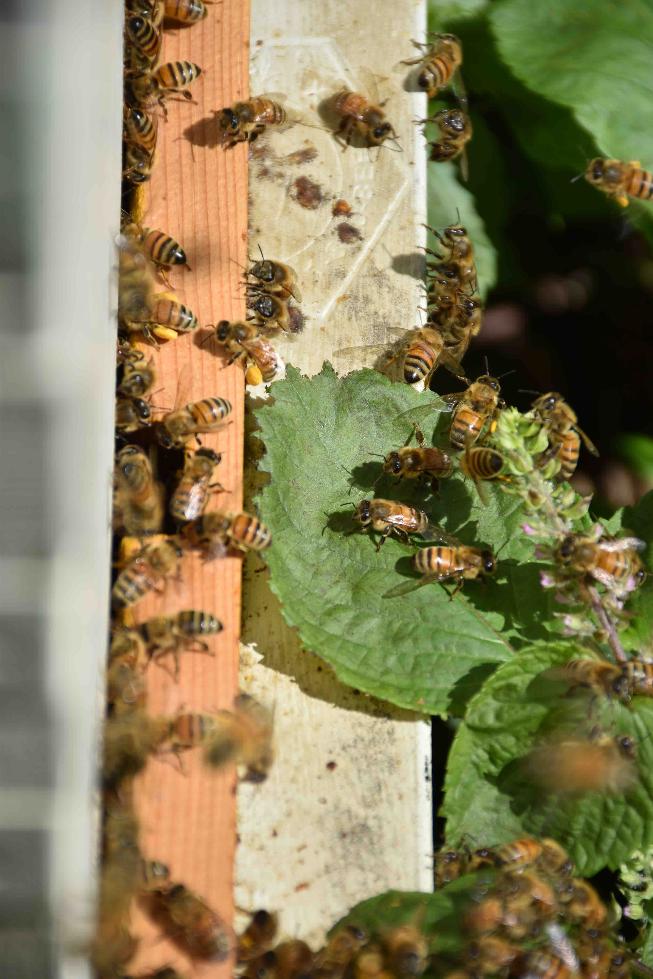
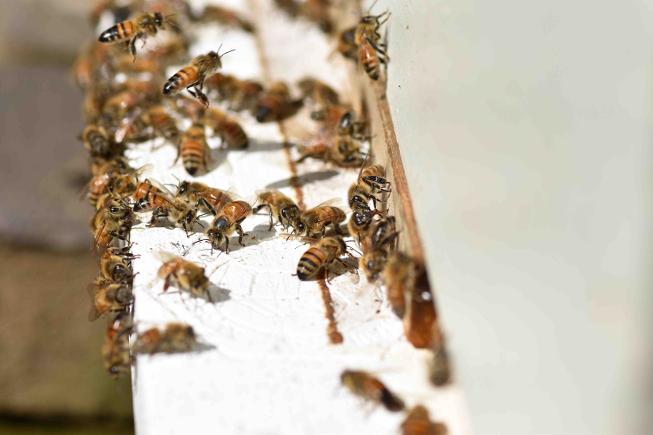
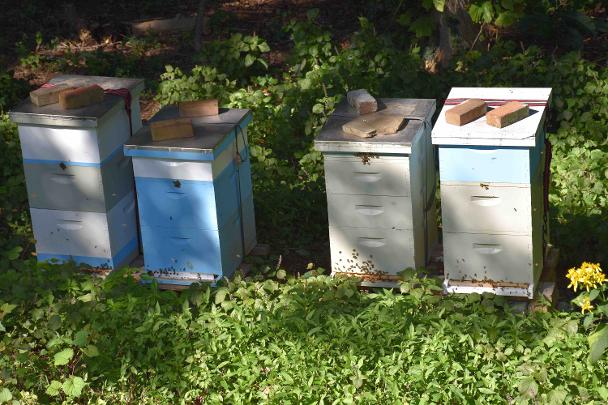
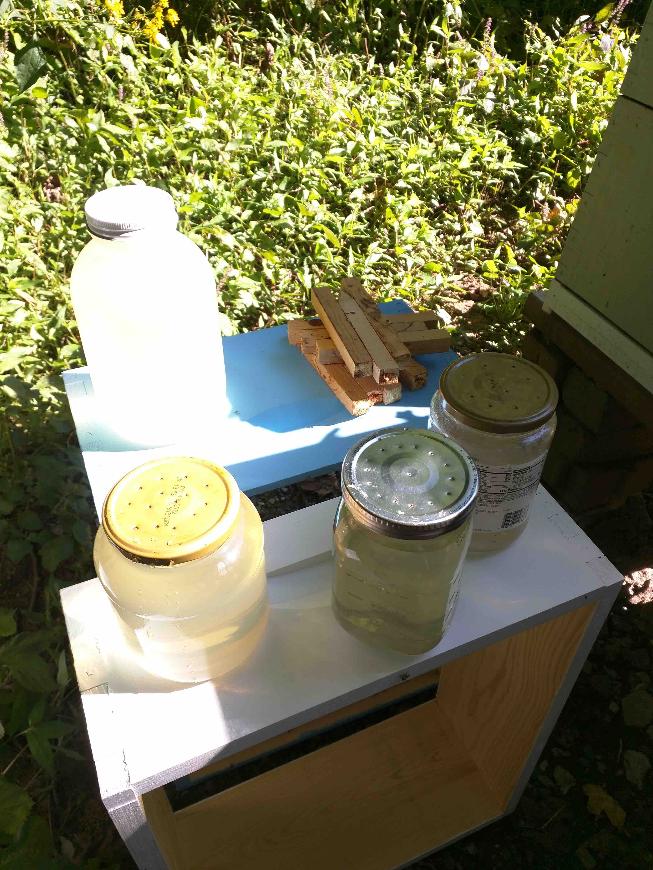
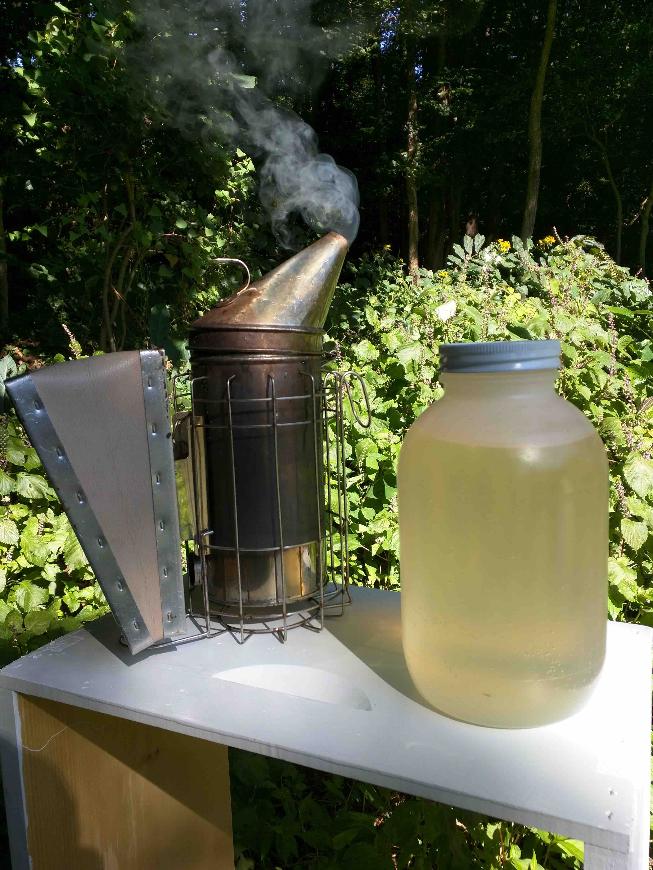
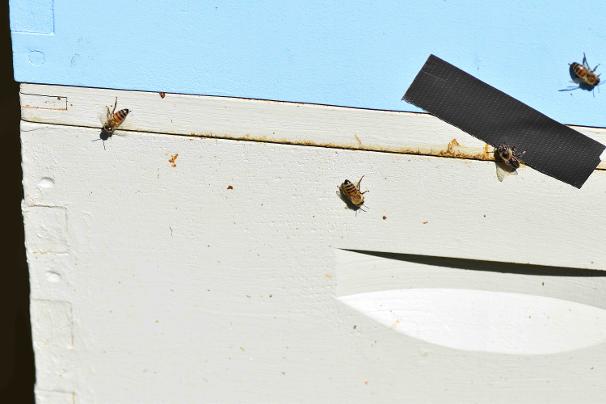
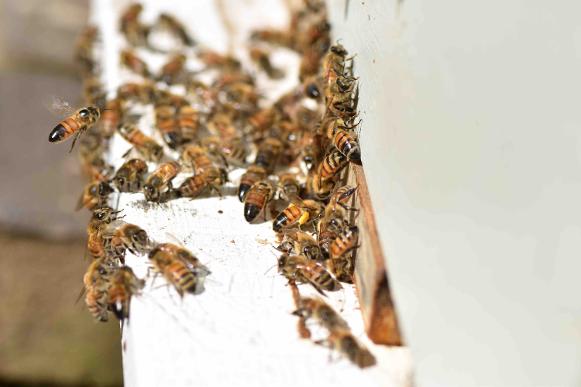
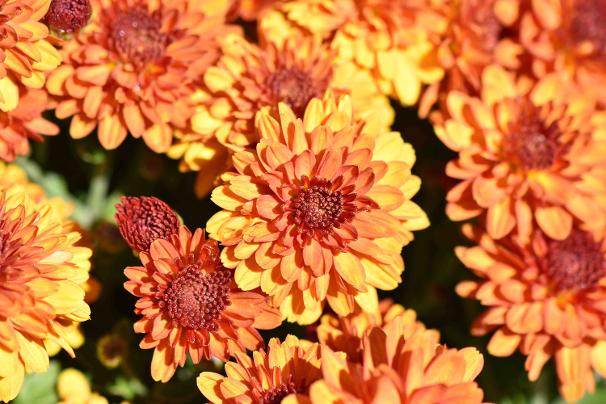

Goldenrod

Yellow crownbeard (I think)


These zinnias are not standing straight up; they are stretching towards the sun. The bees do the same thing the moment they leave the hive......they head south.

September 11, 2020. 7:10am, 76 F, 100% humidity. I don't like to anthropomorphize when it comes to the bees but the bees inside the hives might feel like I do in this weather..........sticky, sticky, sticky.

There is sedum flowering now and the honey bees love it. Do you see the yellow and black stripes on the bee's abdomen? Bee abdomens are actually all black. They have yellow hairs that give them their stripes. As a bee ages, the yellow hairs can fall out.

Do you see the bee in the center of the photo bringing back pollen? This old bee has lost her stripes.

Bees are returning to the hive with full pollen baskets. Pollen is the main protein source for the brood. When you see this, it's an indication that there is brood and a laying queen inside the hive.

Honey bees have 3 pairs of legs; when they fly they leave their hind pair hanging down.


Fall feeding has begun.


It's mid-October and I lost my blue hive to robbing. This occurred in the past 2-3 weeks (after I started feeding). My guess is that the colony from hive #3 was the culprit because all of a sudden, hive #3 has over double the amount of honey/nectar that I remember it having. There were still plenty of bees in the blue hive but zero food stores, no queen and no brood. After a quick chat with my mentor I did a newspaper combine, condensing all the bees in the blue hive down to one box and setting it on top of hive #3. Note to self: next year remove all upper entrances when feeding.

There are quite a few bee abdomens in this photo showing their yellow fuzz is disappearing.....this is a sign that the bee population is aging. The summer bees are dying and winter bees (which live longer) will start to predominate the worker bee force.

©Copyright ZeesBees.com 2019-2024
Make a free website with Yola